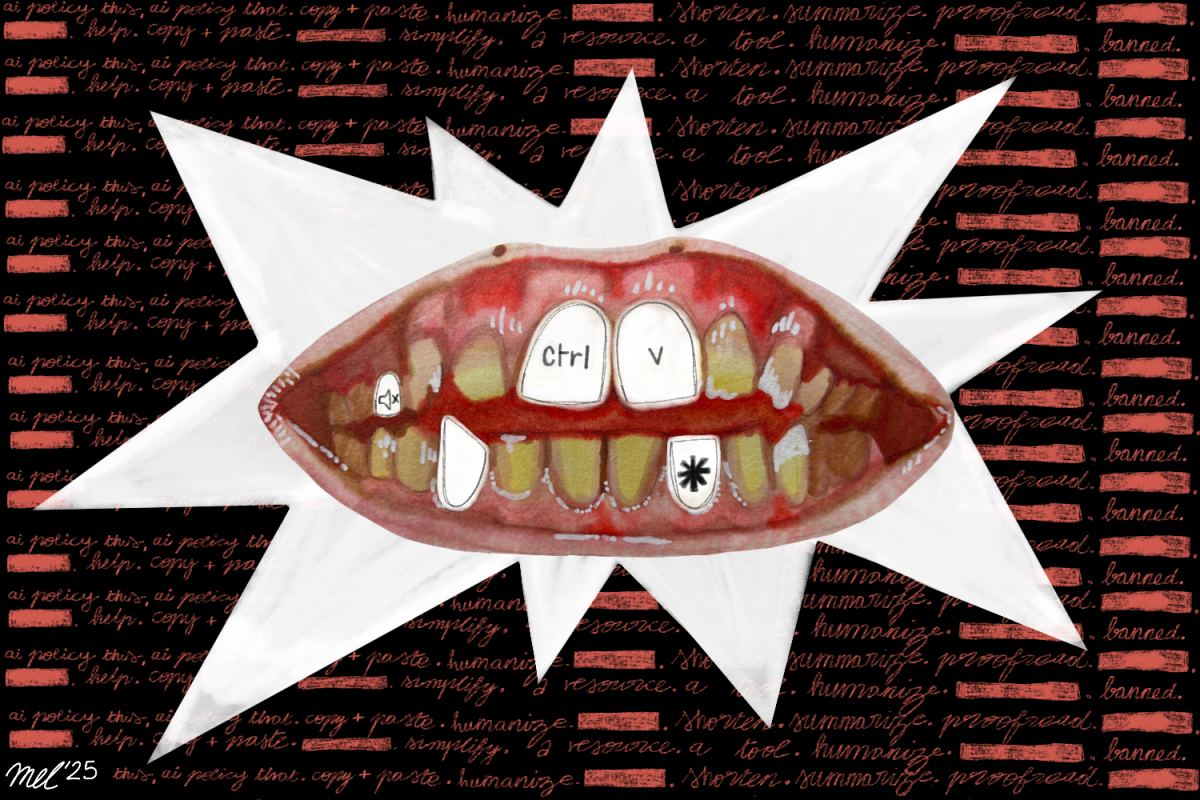
Fashion aficionados can now see outfits and items worn by David Bowie, Young Thug and Jimi Hendrix as well as designs by Gucci and Palomo up close at the Museum of Fine Arts’ newest exhibit, titled “Gender Bending Fashion.” The exhibit opened Thursday and features more than 60 designs of clothing and costumes with importance in fashion history.
The MFA is celebrating “a century of style that dares to break the rules” in “Gender Bending Fashion,” according to the exhibit’s website.
“The garments on view can speak more broadly to societal shifts across the past century—including changing gender roles, increasing visibility of LGBTQIA+ communities, and the rise of social media as a powerful tool for self-expression,” the website reads.
The exhibit examines historical fashion trends and, by including older garments, tackles the misconception that genderbending fashion is a novel concept. Clothing from the early 20th century on display, such as the garçonne trend of the 1920s, shows the audience that fashion has been breaking the confines of gender for a long time.
The exhibit served not only as a walk through time, but also as a trip around the world. Fashion designers from countries such as Belgium, Japan and Spain have garments featured in the exhibit.
This international diversity is clearly saying that genderbending in fashion is not just a radical Western idea: instead, it is a phenomenon that is present in places and cultures all over the world.
When visitors enter the gallery, they are greeted with an explanation of how the construction of the gender binary impacts society, the difference between sex and gender and a glossary of gender and sexuality-related terms used in the exhibit.
This was incredibly helpful to the average museum-goer, as not everyone is well-versed in some of the gender and sexuality-related knowledge needed to fully appreciate the exhibit. Additionally, it gives the viewers an opportunity to learn something new and to ask questions without fear of sounding ignorant.
Providing this information in easy-to-understand terms gives visitors the chance to expand their knowledge in an accessible way.
Everything about “Gender Bending Fashion” celebrates fashion design that ventures beyond the confines of gender — even aspects that are not completely visible at first glance.
The soundtrack playing over the exhibit features a playlist of songs related to gender nonconformity, either through the performer or the content of the song itself. Some songs on the playlist include David Bowie’s “Rebel Rebel,” Lady Gaga’s “Born this Way” and The Replacements’ “Androgynous.”
The exhibit’s background music is a detail so miniscule that some visitors might not even notice it. But the inclusion of the thematic music makes it more cohesive. The curators left nothing unplanned, and it adds to the exhibit’s impact.
In addition to the garments on display, “Gender Bending Fashion” also features a digital screen that shows 10 Boston residents discussing their opinions on gender and approaches to fashion. This element makes the high-end runway items on display feel more accessible to everyone, despite the garments’ original purposes of adorning celebrities and models.
The digital display of local people helps make the topic of gender fluidity more approachable — it shows that gender bending fashion is something anyone can enjoy.
The last display visitors see before they exit the exhibit includes clothing made by designers who predict what the evolution of fashion will look like in the coming years. It looks to historical and modern fashion trends to predict where we’ll go next as a society.
This offers a new perspective for viewers as they reflect on the exhibit as a whole.
There’s one message the “Gender Bending Fashion” exhibit screams loud and clear: there are no rules to fashion. Clothes are made for everyone and shouldn’t be regulated by the social constructs of gender.
In a society that’s moving toward dismantling the confines and expectations of the traditional gender binary, “Gender Bending Fashion” fits right in, making room for the representation of all gender identities.
“Gender Bending Fashion” is on view at the MFA until Aug. 25.










































































































